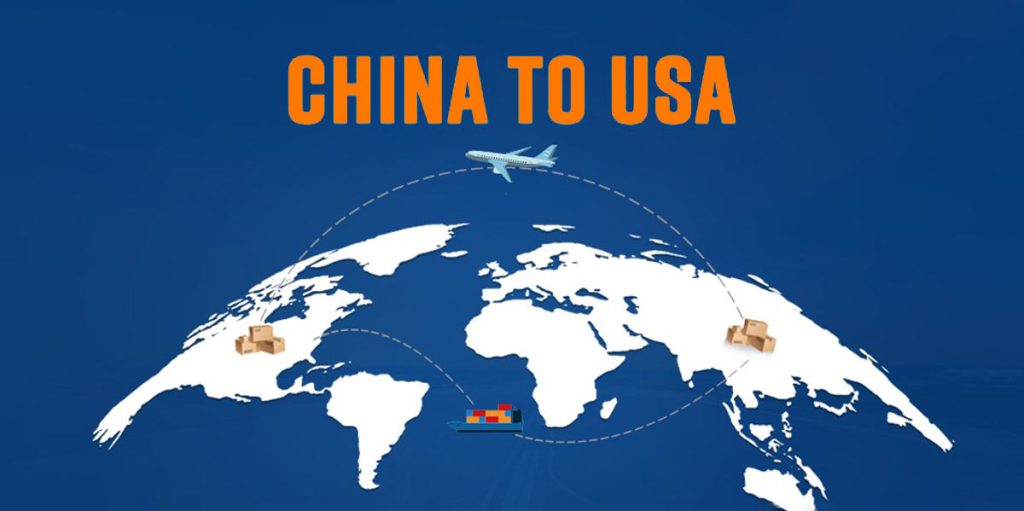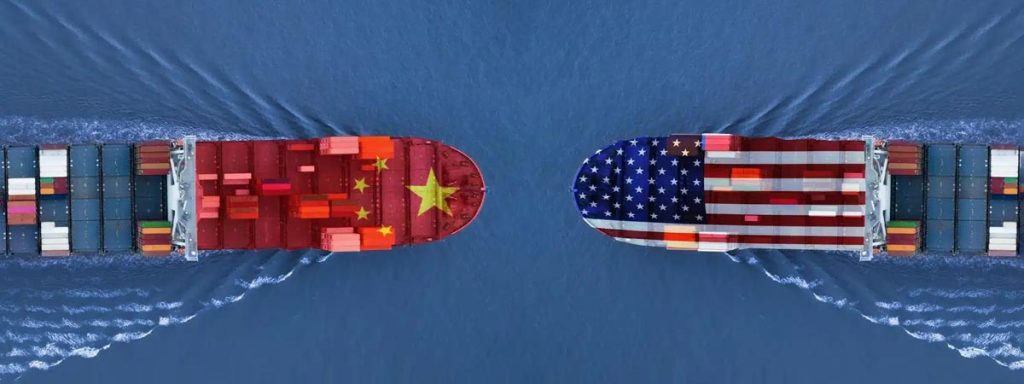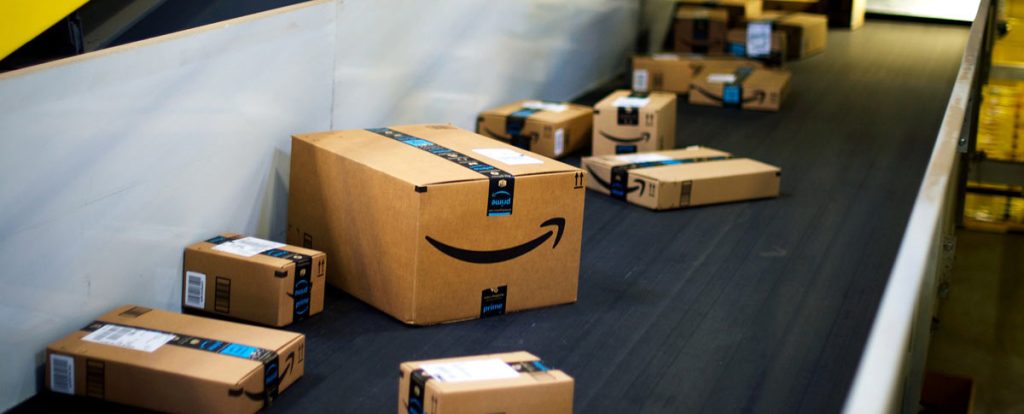In an increasingly globalized world, efficient logistics and shipping processes are paramount for businesses looking to import goods from international markets. One of the most significant trade relationships exists between China and the United States, where a myriad of shipping options cater to different needs and budgets. This article will explore various shipping methods, including air freight, sea freight, land freight, dropshipping, FCL/LCL shipping, door-to-door services, Amazon FBA, and express shipping through major carriers such as DHL, FedEx, UPS, and TNT.

Shipping from China to the United States can be categorized into several methods based on the type, size, urgency, and cost considerations. Here are the key shipping methods:

Air freight is one of the fastest ways to ship goods internationally. It is ideal for time-sensitive shipments, such as electronics or fashion items that are in high demand. Key aspects of air freight include:
Speed: Typically takes 3-7 days.
Cost: More expensive compared to other methods.
Weight Limitations: Generally suited for shipments weighing up to 300 kg.
Advantages of Air Freight
Disadvantages of Air Freight

Sea freight is the most economical option for shipping large quantities of goods. It is suitable for bulky items and non-urgent shipments.
Full Container Load (FCL)
FCL involves renting a full container for your shipment. This method is cost-effective for large volumes of goods and minimizes handling risks.
Less than Container Load (LCL)
LCL allows multiple shippers to share a container. This is a more affordable solution for smaller shipments but may involve longer delivery times due to consolidation processes.
Advantages of Sea Freight
Disadvantages of Sea Freight

Land freight includes trucking and rail transport. It is commonly used for shipments within the USA after arriving at a port or for cross-border deliveries from Canada or Mexico.
Advantages of Land Freight
Disadvantages of Land Freight

Dropshipping has become a popular method for e-commerce businesses looking to enter the market without holding inventory. This model allows you to sell products directly from suppliers in China.
Advantages of Dropshipping
Disadvantages of Dropshipping

Door-to-door shipping services simplify the logistics process by providing end-to-end solutions. This service includes pickup from the supplier's location in China and delivery to the final destination in the USA.
Advantages of Door-to-Door Shipping
Disadvantages of Door-to-Door Shipping

For e-commerce sellers using Amazon as their sales platform, FBA offers an attractive option. Sellers ship their products to Amazon warehouses, and Amazon handles storage, packing, and shipping.
Advantages of Amazon FBA
Disadvantages of Amazon FBA

For urgent shipments, express shipping via major carriers such as DHL, FedEx, UPS, and TNT is often the best option. These services provide fast delivery across international borders.
Key Features of Express Shipping
Advantages of Express Shipping
Disadvantages of Express Shipping

When choosing a shipping method from China to the United States, consider factors such as:
The following table summarizes the key differences between the different shipping methods:
| Shipping Method | Speed | Cost | Best For |
| Air Freight | 3-7 Days | High | Urgent, light goods |
| Sea Freight (FCL) | 20-40 Days | Low | Bulk shipments |
| Sea Freight (LCL) | 20-40 Days | Moderate | Smaller shipments |
| Land Freight | 3-14 Days | Varies | Last-mile delivery |
| Dropshipping | Varies | Low to Moderate | E-commerce startups |
| Door-to-Door | Varies | Moderate to High | Convenience |
| Amazon FBA | Varies | Moderate to High | E-commerce sellers |
| Express Shipping | 1-5 Days | Very High | Time-sensitive shipments |
In most cases, customs in China do not impose restrictions on the export of ordinary products. Your supplier and freight forwarder will handle it, which generally involves the following three aspects:
Export Declaration: Exporters must prepare documents such as the commercial invoice, packing list, and bill of lading. An export licence may be required for certain goods.
Inspection: Goods may be inspected by Chinese Customs to ensure compliance with regulations. Approval is required before shipment can proceed.
Duties and Taxes: Most exports do not incur duties, but any applicable fees must be settled before export.
Regardless of the shipping method chosen, customs clearance is essential when importing goods into the United States. This process involves several important steps:
Documentation: Ensure that all required documents are prepared, including commercial invoices, packing lists, and bills of lading.
Duties and Taxes: Be aware of any import duties and taxes applicable to your products.
Compliance: Ensure that your products comply with U.S. regulations, including safety standards and labeling requirements.
Customs Broker: Consider hiring a customs broker who can navigate the complexities of customs clearance on your behalf.

Choosing a reliable logistics partner is crucial to ensuring smooth shipping operations. Here are some tips for choosing the right freight forwarder or logistics company:
Experience: Look for companies with experience in shipping from China to the United States and knowledge of customs regulations.
Reputation: Research online reviews and testimonials to gauge the reliability and quality of service.
Services Offered: Confirm whether they provide the specific services you need, such as air freight, sea freight, or door-to-door deliveries.
Customer Support: Choose a partner with responsive customer support to assist you throughout the shipping process.
To ensure a smooth shipping experience, consider these practical tips:
Plan Ahead: Allow plenty of time for shipping and customs clearance, especially if you're on a tight schedule.
Optimize Packaging: Use appropriate packaging materials to protect your products during transit and minimize shipping costs.
Stay Informed on Regulations: Regularly update yourself on changes in import regulations and tariffs that may affect your shipments.
Track Shipments: Utilize shipment tracking tools provided by your logistics partner to monitor the progress of your goods.
Build Relationships: Develop strong relationships with suppliers and logistics providers to improve communication and streamline processes.
Shipping from China to the United States offers many opportunities for businesses seeking to expand their reach and access a global market. Understanding the various shipping methods – air freight, sea freight, land freight, dropshipping, Amazon FBA, and express shipping – will empower you to make informed decisions based on your unique needs.
By considering critical factors such as speed, cost, volume, and compliance, you can choose the most appropriate shipping method that aligns with your operational goals. As trade continues to evolve, staying abreast of industry trends and maintaining strong partnerships will be vital in navigating the complexities of international logistics.
Whether you are a small startup or an established business, the effectiveness of your shipping strategy can significantly impact your bottom line and customer satisfaction.
As globalization continues and e-commerce grows, it is essential to keep an eye on emerging trends that could affect shipping practices:
Sustainability: There is increasing pressure for eco-friendly logistics practices. Companies are exploring options like carbon-neutral shipping and sustainable packaging. This trend not only helps the environment, but can also enhance brand reputation among consumers who prioritize sustainability.
Technology Integration: The use of technology in logistics is on the rise. Innovations such as AI for route optimization, blockchain for secure transactions, and IoT devices for real-time tracking will likely reshape how companies manage their supply chains.
Drones and Autonomous Vehicles: While still in the development stage, drones and autonomous delivery vehicles show promise in reducing delivery times and costs, especially for last-mile delivery. These technologies may become more common in the coming years.
Increased Customs Scrutiny: As global trade regulations tighten, businesses should prepare for enhanced customs inspections and compliance checks. Staying informed of regulatory changes can help prevent delays and fines.
Diversification of Supply Chains: Recent global disruptions have prompted many companies to rethink their reliance on single-source suppliers or shipping routes. Diversifying supply chains to include multiple sources and shipping methods can mitigate the risks associated with future disruptions.
E-commerce Growth: The continued growth of online shopping means that demand for efficient shipping solutions will remain high. Businesses must adapt their logistics strategies to meet consumer expectations for fast and reliable delivery.
Navigating the complexities of shipping from China to the United States requires careful planning and strategic decision-making. By understanding the various shipping methods, selecting a reliable logistics partner, and staying informed of industry trends, businesses can streamline their operations and enhance customer satisfaction.
Ultimately, effective shipping isn't just about moving products; it's about building trust with your customers and ensuring their expectations are met consistently. By investing in efficient shipping solutions and staying adaptable in a rapidly changing market, you can position your business for long-term success in the global marketplace.
If you have any further questions or need assistance with specific aspects of shipping from China to the United States, feel free to contact us for tailored advice and support!